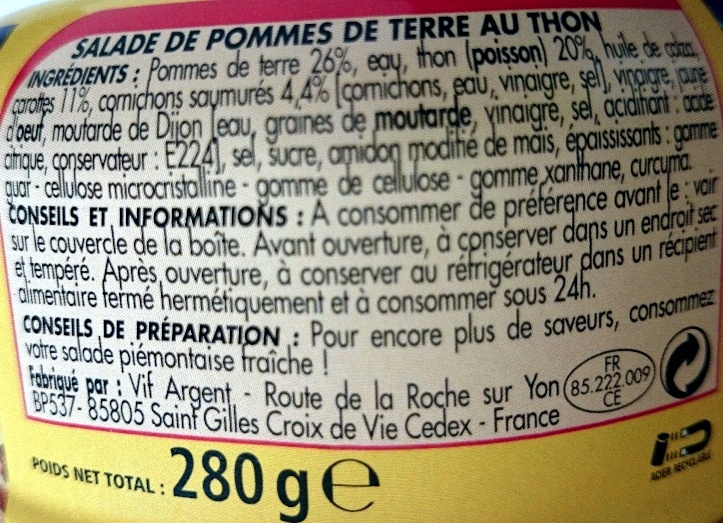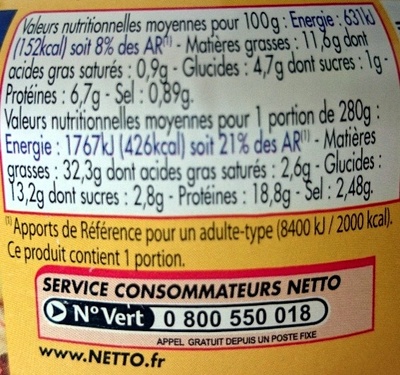Salade au Thon Piémontaise - Netto - 280 g
Important note: this product is no longer sold. The data is kept for reference only. This product does not appear in regular searches and is not taken into account for statistics.
This product page is not complete. You can help to complete it by editing it and adding more data from the photos we have, or by taking more photos using the app for Android or iPhone/iPad. Thank you!
×
Some of the data for this product has been provided directly by the manufacturer INTERMARCHÉ.
Barcode: 3250391110643 (EAN / EAN-13)
Common name: Salade de pommes de terre au thon
Quantity: 280 g
Packaging: Box, Canned, fr:Acier recyclable
Brands: Netto
Categories: Canned foods, Meals, Prepared salads, Meals with fish, Salads with fish, Potato dishes, Tuna salads, Canned meals, Potato salads, Piemontese salads, Vegetable salads, Salads, fr:Piémontaise au thon
Labels, certifications, awards:
Green Dot, fr:Acier recyclable, fr:Eco-Emballages
Manufacturing or processing places: VIF Argent - VIF Very Innovative Food (Filiale Gendreau) - 40 Route de la Roche sur Yon - ZI de la Bégaudière - 85800 Saint-Gilles-Croix-de-Vie, Vendée, Pays de la Loire, France
Traceability code: FR 85.222.009 CE - Saint-Gilles-Croix-de-Vie (Vendée, France)
Stores: Netto
Countries where sold: France
Matching with your preferences
Environment
Carbon footprint
Packaging
Transportation
Report a problem
Data sources
Product added on by valeryan-24
Last edit of product page on by org-intermarche.
Product page also edited by desan, jacob80, packbot, quechoisir, teolemon.










